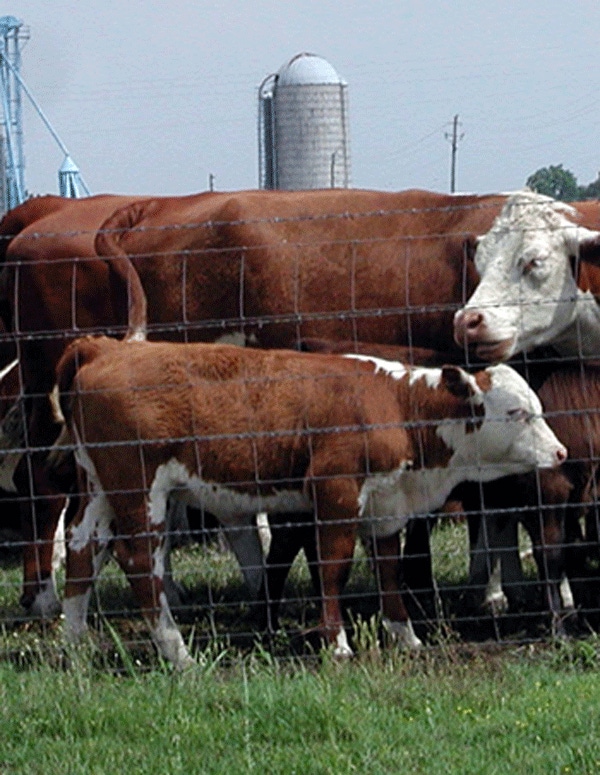
• The body condition scoring system allows producers to visually assess their cow herd using a number system that objectively describes the amount of condition or fat reserve of an animal.• Because cow/calf producers do not weigh cows on a regular basis, they need a management technique to evaluate their cow herd as it relates to productivity and profit potential.
February 25, 2011

Body condition scores (BCS) describe the relative fatness of a cow through the use of a nine-point scale and is an effective management tool to evaluate nutritional status of the herd.
The body condition scoring system allows producers to visually assess their cow herd using a number system that objectively describes the amount of condition or fat reserve of an animal. Because cow/calf producers do not weigh cows on a regular basis, they need a management technique to evaluate their cow herd as it relates to productivity and profit potential.
Cow body condition score is closely related to reproductive efficiency and is a more reliable indicator of nutritional status of a cow then is body weight.
Body condition at calving impacts future reproductive performance for spring calving cows.
Grazing lost body condition back onto cows is more economical than carrying harvested forage to them to achieve the desired body condition. Managing body condition is like making the porridge for Goldie Locks not to hot, not to cold, but just right. It’s not economical to have cows too fat or too thin; they need to be just right at the right time of the production cycle.
When to condition score
As a rule of thumb, one BCS equates to about 75 to 80 pounds of live weight in cows. Thus, if a cow weighed 1,100 pounds at BCS 4, this same cow would be expected to weigh 1,175 pounds at BCS 5 and 1,250 pounds at BCS 6. It is important to remember that these weight changes do not include weight of the fetus, fetal membranes, or fetal fluids, which in total amounts to about 125 to 155 pounds for cows in late gestation.
With this concept in mind, remember a cow that is maintaining weight during late gestation is actually losing body weight and, possibly, body condition because the fetus is growing at least one pound per day.
Most common scoring system
The most common used condition scoring systems is the 1 to 9 body condition scoring system where a BCS 1 cow is extremely thin and emaciated and a BCS 9 cow is very fat and obese. Assign a cow a condition score in whole numbers such as 3, 4, 5, etc.
The greatest single factor influencing rebreeding performance of beef cows is body condition at calving, especially for spring calving herds. However, if producers wait until calving to manage body condition of their cow herd, they will find it very difficult and expensive to increase the body condition of a lactating cow.
Although evaluation of body condition can be looked at as an ongoing process, there are key times when body condition scoring should be considered in the late summer, early fall of the year especially for ranchers that are trying to graze cows for 12 months.
Consider condition scoring the cow herd in late summer. This may seem odd, but it does allow for strategic use of management practices that can economically put condition back on thin females. Condition scoring the cow herd at this time may be used in planning management strategies such as early weaning or supplementation programs for cow grazing warm-season pastures or range that are decreasing in quality.
Scoring cows at this time is probably more important in range areas as compared to areas that would have both cool-and warm-season pastures and crop residues.
Young cows need to be examined closely, as they are likely to be the females that are losing condition and early weaning this group may be the management option. Also, if pasture quality and quantity is decreasing at a rapid rate due to environmental conditions, weaning the whole calf crop may be necessary. Data indicates it is more economical to feed the calf directly than to supplement the cow to feed the calf.
Consider condition scoring the cow herd in the fall. Condition scoring cows in the range area in the fall is critical. Because of the feed resources, it is more difficult to get condition back on cows prior to calving in the range area where the feed resources are primarily warm-season grasses.
Condition scoring cows at this time will help in planning an economical winter supplementation program to get females back to the target BCS. If young females are thin, consider early weaning their calves to allow them to regain condition. For producers that have cool-season pastures and crop residues, late summer/early fall condition score may not be as critical. However it may be important in dry years. Then early weaning or supplementation may be management options.
You May Also Like



